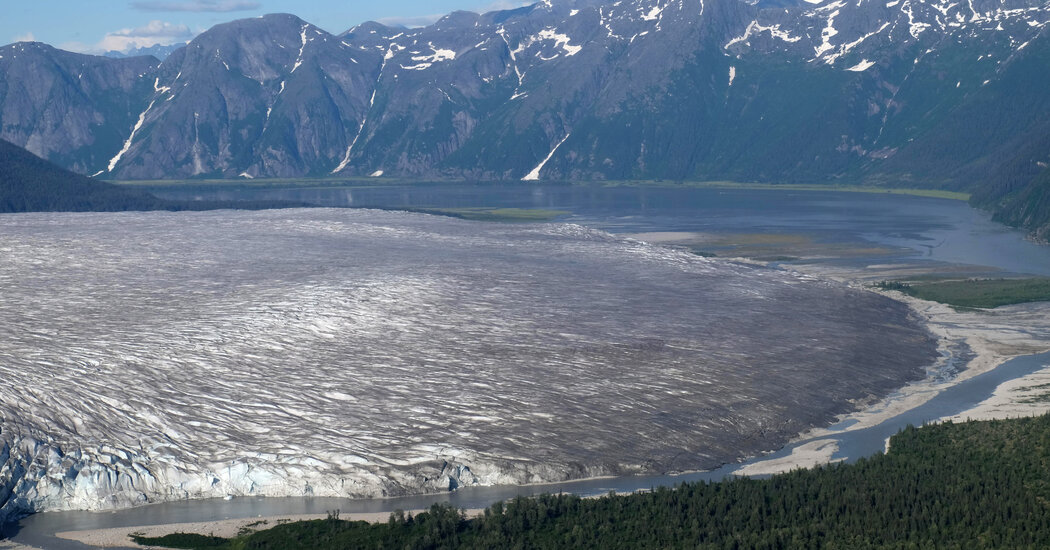The speed of decline in the Juneau Ice Field, an expanse of 1,050 interconnected glaciers, has doubled in recent decades, scientists discovered.
One of North America’s largest areas of interconnected glaciers is melting twice as quickly as it did before 2010, a team of scientists said Tuesday, in what they called an “incredibly worrying” sign that land ice in many places could disappear even sooner than previously thought.
The Juneau Ice Field, which sprawls across the Coast Mountains of Alaska and British Columbia, lost 1.4 cubic miles of ice a year between 2010 and 2020, the researchers estimated. That’s a sharp acceleration from the decades before, and even sharper when compared with the mid-20th century or earlier, the scientists said. All told, the ice field has shed a quarter of its volume since the late 18th century, which was part of a period of glacial expansion known as the Little Ice Age.
As societies add more and more planet-warming carbon dioxide to the atmosphere, glaciers in many areas could cross tipping points beyond which their melting speeds up rapidly, said Bethan Davies, a glaciologist at Newcastle University in England who led the new research.
“If we reduce carbon, then we have more hope of retaining these wonderful ice masses,” Dr. Davies said. “The more carbon we put in, the more we risk irreversible, complete removal of them.”
The scientists’ findings were published on Tuesday in the journal Nature Communications.
The fate of Alaska’s ice matters tremendously for the world. In no other region of the planet are melting glaciers predicted to contribute more to global sea-level rise this century.
